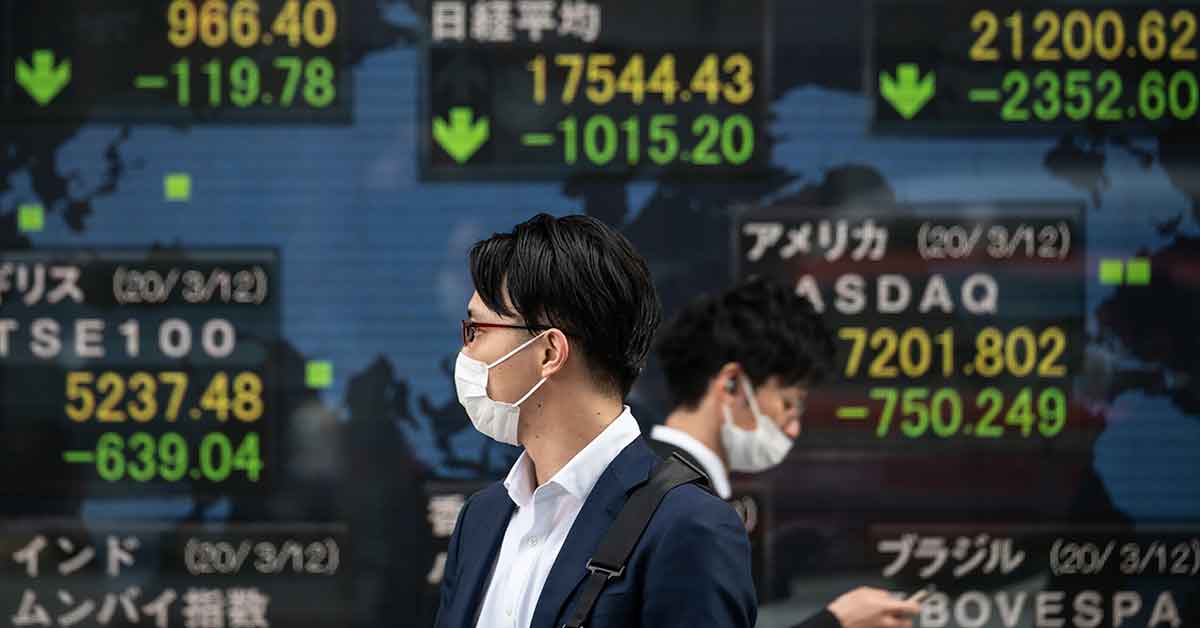As the COVID-19 pandemic drives the global economy into recession, the temptation to pursue aggressive monetary easing is growing. Already, the United States (US) Federal Reserve (Fed) has pushed interest rates near zero and committed to pump trillions of dollars into the economy. The European Central Bank (ECB) has also ramped up bond purchases, though Germany’s constitutional court is mounting some resistance. Like the easing that followed the 2008 financial crisis, such policies will reverberate worldwide via exchange-rate fluctuations.
On their own, major economic shocks, such as natural disasters or disease outbreaks, tend to drive up the value of the affected countries’ currencies. When the Kobe earthquake struck Japan in 1995, the yen appreciated against the US dollar, albeit not immediately. The 2011 Great Northeast Earthquake had a stronger effect, driving the yen to an historical high of ¥76 to the dollar.
What explains this post-disaster boost to a currency’s value? Exchange rates reflect relative demand for currencies in the world market. And demand depends partly on supply: if there are far more dollar assets than yen assets on the world market, the scarcer yen will gain value. Rising demand for the yen will compound this effect.
Disasters often undermine trading activities – a development that can lead to currency depreciation. But that effect tends to be offset by the increase in precautionary demand for money, which, together with falling consumption, constrains supply. After all, in times of uncertainty, people want to hold more cash. In a country like Japan or the US, where there is little risk of runaway inflation, they will typically stock up on the local currency.
This pattern has been borne out during the COVID-19 crisis. The outbreak hit Japan before it began to ravage the US. In early March, when the US still had only a few confirmed cases, the yen-dollar exchange rate appreciated, reaching ¥103.
By 20 March, however, US infections were proliferating, spurring many, including my wife and me, to withdraw emergency cash from the bank. The desire for a safety net amid rising uncertainty, together with limitations on movement, began to weaken consumption. Meanwhile, Japan had its own outbreak relatively under control. So, not surprisingly, the dollar began to appreciate, reaching ¥112.
As we witnessed in the wake of the 2008 financial crisis, however, monetary policy can reshape exchange-rate dynamics. When the US mortgage market was upended, the Fed purchased huge amounts of mortgage-backed securities and US Treasuries to increase liquidity and keep the debt market functioning. As dollars flooded global markets, the relative value of other currencies soared.
Now, the Fed is again pumping dollars into world markets – an approach that has already caused the dollar to fall back to pre-pandemic levels of around ¥107-108. The dollar has fallen further vis-à-vis the euro, not least because, as it stands, markets expect more monetary expansion from the Fed than from the ECB.
With the Fed having signalled its willingness to increase the supply of dollars further, this trend is likely to continue – with serious implications for the Japanese and European economies. After all, exchange rates play a major role in export competitiveness. After the 2008 crisis, the export-cost disadvantage created by a soaring yen left Japan worse off than some countries directly affected by the financial tumult, beginning with the US itself.
This leaves countries with only one real option: to increase the supply of their own currency as well. As Bank of Japan Governor Haruhiko Kuroda demonstrated when he implemented expansionary policies – part of the broader economic-recovery program, dubbed “Abenomics,” that was introduced in 2012 – increasing the money supply can make a difference, even against a background of negative interest rates.
Today, governments are generally focused either on “flattening the curve” of their first wave of COVID-19 infections or, increasingly, on avoiding a second wave of infections as they ease social-distancing protocols and allow economic activity to resume. At the same time, many are implementing programs and policies to support households and businesses, in the hope of mitigating the economic fallout of lockdowns and social distancing.
But, with the US apparently intent on flooding global markets with dollars, even economies that have so far managed the crisis effectively may have little choice but to pursue their own monetary easing. Japan is at the top of that list.
Related articles:
